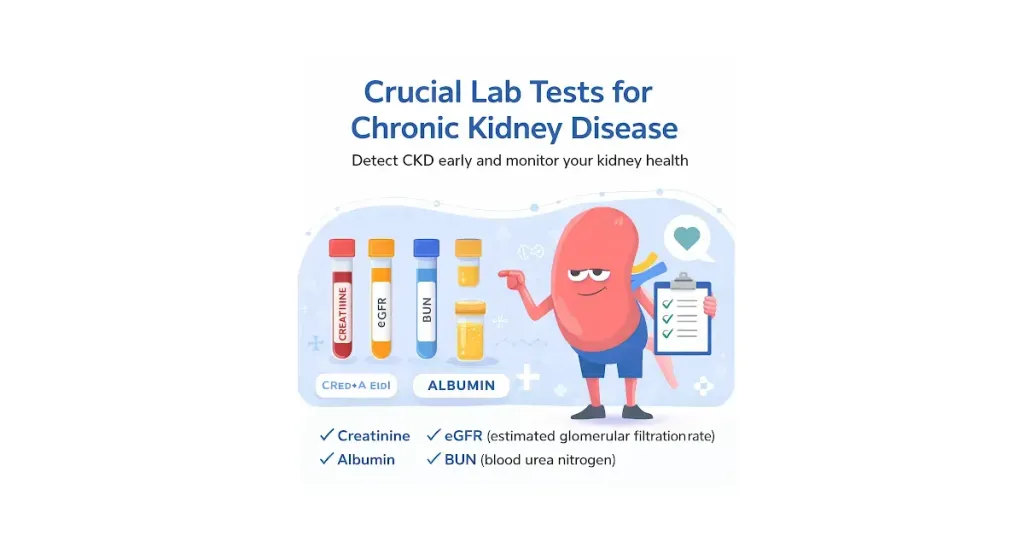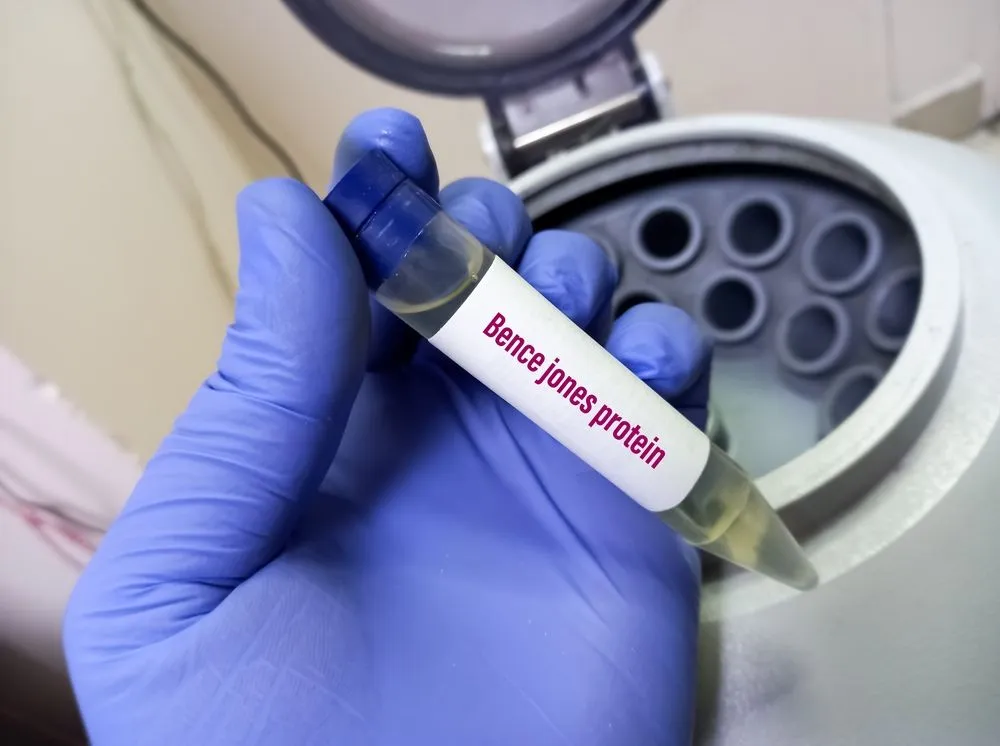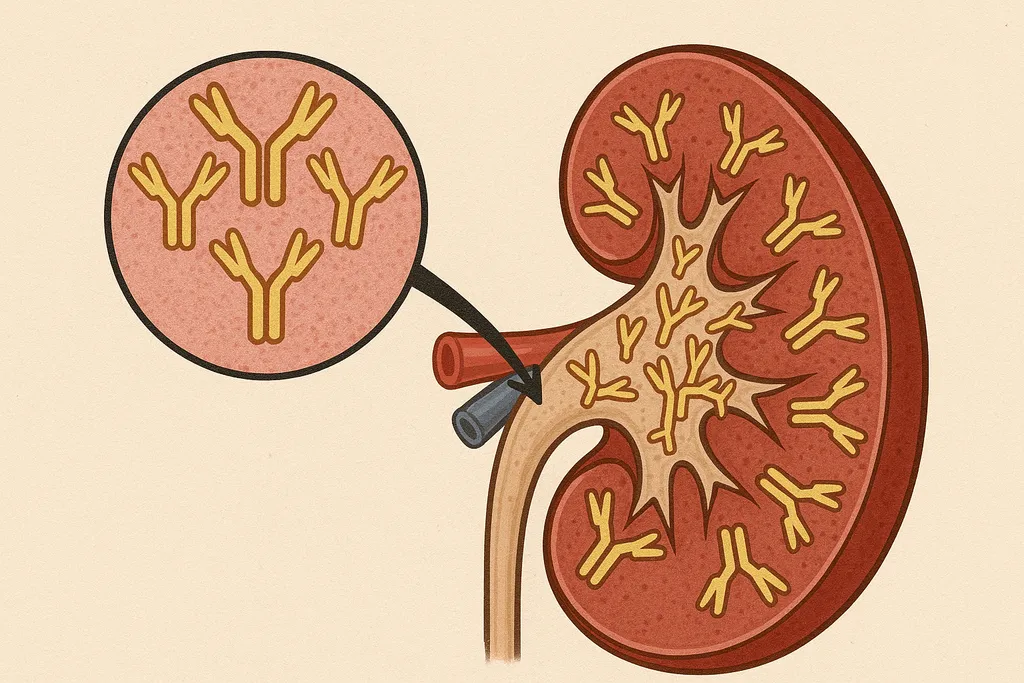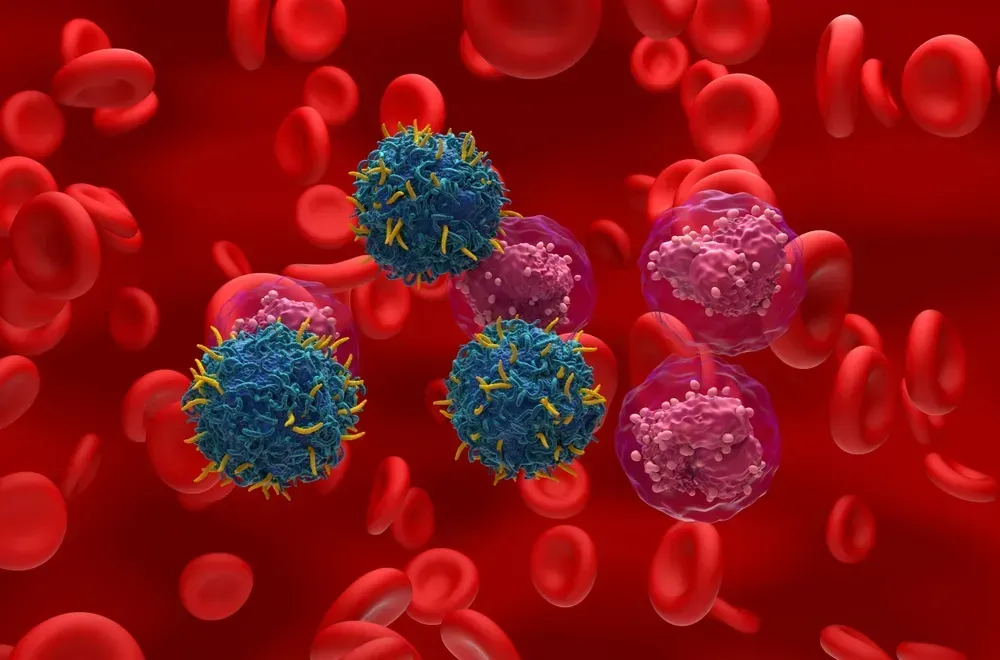Why is Multiple Myeloma So Complicated?

Multiple myeloma is an extremely complicated disease. The same diagnosis on paper can be drastically different between two patients in terms of symptoms, risk of progression, and treatment approach.
This makes it hard for patients to understand myeloma and can potentially make it hard for oncologists to treat it if they are not aware of the complexity of the cancer they are facing.
You may hear about myeloma's "heterogeneity" and about "clonal" and "subclonal" myeloma, but what does that mean, and how can you better understand multiple myeloma?
What Makes Myeloma So Complex?
Multiple factors contribute to multiple myeloma being such a complex disease. These include:
- Heterogeneity (including clonal evolution and genetic variability)
- Bone marrow microenvironment
- Clinical presentations of the disease (involvement with organs)
- Need for personalized treatment
In this article, we will explain the factors above and describe how they contribute to the complexity of multiple myeloma.
What Does Heterogeneity Mean in Multiple Myeloma?
Heterogeneous means diverse. When multiple myeloma is explained as heterogeneous, it refers to how different the disease can appear in each individual patient due to genetic diversity and clonal evolution.
Genetic Diversity in Multiple Myeloma
Multiple myeloma can have several different genetic presentations. These presentations are often called translocations, trisomies, gene deletions, or amplifications.
Each genetic characteristic is complex and changes how the multiple myeloma responds to treatment.
These genetic mutations can be identified through a FISH test at diagnosis or relapse.
For more information about myeloma genetics, watch the HealthTree University Course here: Myeloma Genetics/Genomics.
Clonal Evolution in Multiple Myeloma
Most cancers are known as “clonal” cancers, which means when observed within a patient, all cancer cells share the same mutation.
When multiple myeloma is compared to other cancers (like when Dr. Lohr of Dana Farber compared multiple myeloma to ovarian cancer), it becomes obvious that multiple myeloma is a subclonal disease. This means that within one myeloma patient, multiple “versions” (clones) of myeloma can be present. While 10% of the myeloma cells might share the same mutation, another 10% share a completely different mutation.
Unfortunately, each of those subclones responds differently to treatment. This means that a therapy may only effectively target one of the patient’s subclones, leaving other subclones unaffected. This makes finding a single, universally effective therapy to cure multiple myeloma very difficult.
Evolution of Multiple Myeloma
Those who are diagnosed with active multiple myeloma, unfortunately, have had some form of the disease within them for some time.
Myeloma is considered an evolving disease, starting with MGUS (Monoclonal Gammopathy of Undetermined Significance) and/or smoldering myeloma and then to active myeloma, sometimes called overt multiple myeloma.
This long evolution (which can last multiple decades) contributes to the development and existence of multiple mutations and subclones within most myeloma patients.
How Does the Bone Marrow Microenvironment Make Myeloma Complicated?
The bone marrow microenvironment contains all cells and molecules within the bones, and it plays a crucial role in the development of multiple myeloma.
Myeloma cells constantly search for new ways to survive and multiply. They can interact with surrounding cells in and around the bone marrow and trick the microenvironment to promote tumor growth and protect them against treatment.
Why Do Myeloma Cells Respond Differently to Treatment?
Myeloma cells can develop resistance to therapy through various mechanisms, including genetic mutations, adapting how they signal other cells within the immune system, and interactions with the bone marrow microenvironment.
This resistance can lead to relapse after initial successful treatment.
How Can Multiple Myeloma Affect My Body, and How Does This Complicate Treatment?
Multiple myeloma can affect a person’s organs, cause immunosuppression, and result in trivial or serious side effects for patients. Each of these can complicate myeloma treatment.
Clinical Presentations of Multiple Myeloma
Multiple myeloma affects multiple organ systems. It can cause bone lesions, kidney damage, anemia, and hypercalcemia. These presentations usually add more specialists, doctor appointments, and side effects to the patient’s already complicated life.
Read more about the signs and symptoms of myeloma here: Multiple Myeloma Signs and Symptoms.
Immunosuppression of Myeloma Patients
The disease often weakens the immune system, which can increase susceptibility to infections and affect the efficacy of immunotherapy.
Side Effects of Multiple Myeloma
Treatments for multiple myeloma, such as chemotherapy, immunomodulatory drugs, and proteasome inhibitors, can have significant side effects. Managing these side effects while effectively targeting the cancer adds to the complexity.
Read more about the side effects of myeloma treatment here: What are the side effects of myeloma therapy?
What Makes Myeloma Complicated for Oncologists and Specialists?
Effective treatment of multiple myeloma requires the treating oncologists or specialists to have a deep knowledge of the disease and its complexity, as well as keep tabs on (or be a part of) the ever-growing research on the myeloma treatment landscape.
Because of all the complexities we reviewed about multiple myeloma, treating physicians often have difficulty diagnosing patients, choosing which treatment options are right for them, and understanding the correct approach for the best outcome.
Diagnostic Challenges for Multiple Myeloma
Diagnosing multiple myeloma involves a combination of blood tests, urine tests, bone marrow biopsies, and imaging studies. The need for comprehensive diagnostic evaluation and monitoring complicates the management.
Constantly Evolving Myeloma Treatment Landscape
The rapid development of new therapies, including monoclonal antibodies, CAR-T cell therapy, bispecific T-cell engagers, and all the potential combinations between them, is very promising. Still, it adds to the complexity of treatment choices and sequencing.
Prognostic Factors of Multiple Myeloma
Multiple prognostic factors, including genetic markers, cytogenetics, and response to initial therapy, influence outcomes. Integrating these factors into treatment planning is complex.
Myeloma Patient-Specific Factors
Individual patient characteristics, such as age, overall health, comorbidities (such as diabetes or high blood pressure), and personal preferences, must also be considered in treatment decisions, making the job of the treating physician even more complicated.
Action Steps for Myeloma Patients and Care Partners
If you are a myeloma patient or know someone with myeloma, consider taking one of the following action steps after reading this article.
- Be aware of what subclones exist within your own multiple myeloma. Talk to your treating physician about your genetic mutations (often called deletions or translocations).
- Discuss the best treatment strategy for you with your doctor. Make sure you are both comfortable with it, and have them explain why they believe your current treatment is the best for you. Become a partner in your myeloma care.
- Continue to educate yourself about the disease to understand better what is going on in your body and stay informed and empowered throughout your treatment journey. You can learn more about multiple myeloma through the following free HealthTree resources:
- HealthTree University (free educational videos and courses)
- Myeloma 101 Pages (get back to the basics)
- Educational Webinars (interviews with myeloma experts)
- Multiple Myeloma News (user-friendly language about the latest news in myeloma)
- Sign up for our Newsletter below.
Subscribe to our weekly newsletter!
Conclusion
As you can see, multiple myeloma is extremely complicated for several reasons, including the disease's heterogeneity, the different ways it affects patients’ bodies, and the behavior of the myeloma cells. This complexity poses significant challenges for patients and oncologists in effectively understanding and treating the disease.
A comprehensive understanding of the disease and continuously adapting treatment strategies are crucial for improving patient outcomes.
Sources:
- mPatient Radio: Dr. Jens Lohr, Dana Farber Cancer Institute and BROAD Institute
- Heterogeneity - Definition, Meaning & Synonyms | Vocabulary.com
Multiple myeloma is an extremely complicated disease. The same diagnosis on paper can be drastically different between two patients in terms of symptoms, risk of progression, and treatment approach.
This makes it hard for patients to understand myeloma and can potentially make it hard for oncologists to treat it if they are not aware of the complexity of the cancer they are facing.
You may hear about myeloma's "heterogeneity" and about "clonal" and "subclonal" myeloma, but what does that mean, and how can you better understand multiple myeloma?
What Makes Myeloma So Complex?
Multiple factors contribute to multiple myeloma being such a complex disease. These include:
- Heterogeneity (including clonal evolution and genetic variability)
- Bone marrow microenvironment
- Clinical presentations of the disease (involvement with organs)
- Need for personalized treatment
In this article, we will explain the factors above and describe how they contribute to the complexity of multiple myeloma.
What Does Heterogeneity Mean in Multiple Myeloma?
Heterogeneous means diverse. When multiple myeloma is explained as heterogeneous, it refers to how different the disease can appear in each individual patient due to genetic diversity and clonal evolution.
Genetic Diversity in Multiple Myeloma
Multiple myeloma can have several different genetic presentations. These presentations are often called translocations, trisomies, gene deletions, or amplifications.
Each genetic characteristic is complex and changes how the multiple myeloma responds to treatment.
These genetic mutations can be identified through a FISH test at diagnosis or relapse.
For more information about myeloma genetics, watch the HealthTree University Course here: Myeloma Genetics/Genomics.
Clonal Evolution in Multiple Myeloma
Most cancers are known as “clonal” cancers, which means when observed within a patient, all cancer cells share the same mutation.
When multiple myeloma is compared to other cancers (like when Dr. Lohr of Dana Farber compared multiple myeloma to ovarian cancer), it becomes obvious that multiple myeloma is a subclonal disease. This means that within one myeloma patient, multiple “versions” (clones) of myeloma can be present. While 10% of the myeloma cells might share the same mutation, another 10% share a completely different mutation.
Unfortunately, each of those subclones responds differently to treatment. This means that a therapy may only effectively target one of the patient’s subclones, leaving other subclones unaffected. This makes finding a single, universally effective therapy to cure multiple myeloma very difficult.
Evolution of Multiple Myeloma
Those who are diagnosed with active multiple myeloma, unfortunately, have had some form of the disease within them for some time.
Myeloma is considered an evolving disease, starting with MGUS (Monoclonal Gammopathy of Undetermined Significance) and/or smoldering myeloma and then to active myeloma, sometimes called overt multiple myeloma.
This long evolution (which can last multiple decades) contributes to the development and existence of multiple mutations and subclones within most myeloma patients.
How Does the Bone Marrow Microenvironment Make Myeloma Complicated?
The bone marrow microenvironment contains all cells and molecules within the bones, and it plays a crucial role in the development of multiple myeloma.
Myeloma cells constantly search for new ways to survive and multiply. They can interact with surrounding cells in and around the bone marrow and trick the microenvironment to promote tumor growth and protect them against treatment.
Why Do Myeloma Cells Respond Differently to Treatment?
Myeloma cells can develop resistance to therapy through various mechanisms, including genetic mutations, adapting how they signal other cells within the immune system, and interactions with the bone marrow microenvironment.
This resistance can lead to relapse after initial successful treatment.
How Can Multiple Myeloma Affect My Body, and How Does This Complicate Treatment?
Multiple myeloma can affect a person’s organs, cause immunosuppression, and result in trivial or serious side effects for patients. Each of these can complicate myeloma treatment.
Clinical Presentations of Multiple Myeloma
Multiple myeloma affects multiple organ systems. It can cause bone lesions, kidney damage, anemia, and hypercalcemia. These presentations usually add more specialists, doctor appointments, and side effects to the patient’s already complicated life.
Read more about the signs and symptoms of myeloma here: Multiple Myeloma Signs and Symptoms.
Immunosuppression of Myeloma Patients
The disease often weakens the immune system, which can increase susceptibility to infections and affect the efficacy of immunotherapy.
Side Effects of Multiple Myeloma
Treatments for multiple myeloma, such as chemotherapy, immunomodulatory drugs, and proteasome inhibitors, can have significant side effects. Managing these side effects while effectively targeting the cancer adds to the complexity.
Read more about the side effects of myeloma treatment here: What are the side effects of myeloma therapy?
What Makes Myeloma Complicated for Oncologists and Specialists?
Effective treatment of multiple myeloma requires the treating oncologists or specialists to have a deep knowledge of the disease and its complexity, as well as keep tabs on (or be a part of) the ever-growing research on the myeloma treatment landscape.
Because of all the complexities we reviewed about multiple myeloma, treating physicians often have difficulty diagnosing patients, choosing which treatment options are right for them, and understanding the correct approach for the best outcome.
Diagnostic Challenges for Multiple Myeloma
Diagnosing multiple myeloma involves a combination of blood tests, urine tests, bone marrow biopsies, and imaging studies. The need for comprehensive diagnostic evaluation and monitoring complicates the management.
Constantly Evolving Myeloma Treatment Landscape
The rapid development of new therapies, including monoclonal antibodies, CAR-T cell therapy, bispecific T-cell engagers, and all the potential combinations between them, is very promising. Still, it adds to the complexity of treatment choices and sequencing.
Prognostic Factors of Multiple Myeloma
Multiple prognostic factors, including genetic markers, cytogenetics, and response to initial therapy, influence outcomes. Integrating these factors into treatment planning is complex.
Myeloma Patient-Specific Factors
Individual patient characteristics, such as age, overall health, comorbidities (such as diabetes or high blood pressure), and personal preferences, must also be considered in treatment decisions, making the job of the treating physician even more complicated.
Action Steps for Myeloma Patients and Care Partners
If you are a myeloma patient or know someone with myeloma, consider taking one of the following action steps after reading this article.
- Be aware of what subclones exist within your own multiple myeloma. Talk to your treating physician about your genetic mutations (often called deletions or translocations).
- Discuss the best treatment strategy for you with your doctor. Make sure you are both comfortable with it, and have them explain why they believe your current treatment is the best for you. Become a partner in your myeloma care.
- Continue to educate yourself about the disease to understand better what is going on in your body and stay informed and empowered throughout your treatment journey. You can learn more about multiple myeloma through the following free HealthTree resources:
- HealthTree University (free educational videos and courses)
- Myeloma 101 Pages (get back to the basics)
- Educational Webinars (interviews with myeloma experts)
- Multiple Myeloma News (user-friendly language about the latest news in myeloma)
- Sign up for our Newsletter below.
Subscribe to our weekly newsletter!
Conclusion
As you can see, multiple myeloma is extremely complicated for several reasons, including the disease's heterogeneity, the different ways it affects patients’ bodies, and the behavior of the myeloma cells. This complexity poses significant challenges for patients and oncologists in effectively understanding and treating the disease.
A comprehensive understanding of the disease and continuously adapting treatment strategies are crucial for improving patient outcomes.
Sources:

about the author
Audrey Burton-Bethke
Audrey is a content writer and editor for the HealthTree Foundation. She originally joined the HealthTree Foundation in 2020. Audrey loves spending time with her supportive husband, energetic four-year-old, and new baby.
More on Core Education
Trending Articles
Upcoming Events




Get the Latest Multiple Myeloma Updates, Delivered to You.
By subscribing to the HealthTree newsletter, you'll receive the latest research, treatment updates, and expert insights to help you navigate your health.
Together we care.
Together we cure.
3x Faster.













